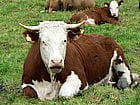It has been rumored for centuries that animals may be a key in sensing impending earthquakes. The first account is from ancient Greece when historians claimed “rats, snakes, weasels, and centipedes deserted the city and headed for safety several days before a devastating earthquake”. This observation and many more of its kind have been made all over the world about animal behavior patterns prior to earthquakes, but there was never an in depth research study done to prove if this was a concrete sign of an earthquake or merely coincidence. Until recently, where more scientific studies are being done to try and prove if this is a reliable method to use when predicting earthquakes.
One scientific investigation into this behavior occurred in Japan in 2011 after they were hit with a massive earthquake damaging and killing many. It was formally named the Tohoku Earthquake. Before this earthquake occurred they surveyed some pet owners, more specifically dogs and cats, to track their animals’ behavior. They also asked to track the dairy milk production from cows before the earthquake as well. The results of this study were interesting. After they collected their information they found that the pet owners recorded their animals having weird behavior one day before the earthquake, while the cows decreased their milk production about one week before the earthquake. About 18.6% of dogs had usual behavior, that includes sticking close to their owner more frequently. Compared to dogs, cats were reported having only 16.6% unusual animal behavior, which included “hiding”and “escaping”. Although these behaviors could be written off as normal for dogs and cats, the observations made on the milk production were a bit more compelling. Preceding the earthquake there was a milk production, “decrease from four to six days before the Tohoku EQ in the facility closest from the epicenter (340 km)”. They also reported that the closer to the epicenter they were, the higher the chance of abnormal behavior occurring. However, though this study had some conclusive evidence, it’s not enough to prove that animals’ behavior can predict anything.
A more recent study in Italy, led by researchers at the Max Planck Institute of Animal Behavior and the University of Konstanz, may lead to even more evidence of animal behaviors linking to seismic events. Wikelski, the director of the Max Planck Institute of Animal Behavior, along with his team, set up an experiment to study animal behaviors for about four months in total in 2016 and 2017. In this study they traced farm animals, specifically six cows, five sheep and two dogs. They used different instruments to “record accelerated movements—up to 48 each second—in any direction”. After the four months a total of 18,000 tremors happened, and one with a magnitude of 6.6. The results were a drastic increase in activity, hours before the earthquake occurred. According to Wikelski all their behavior was connected in some way. He says, “It’s sort of a system of mutual influence. Initially, the cows kind of freeze in place—until the dogs go crazy. And then the cows actually go even crazier. And then that amplifies the sheep’s behavior, and so on.” Like the previous study done in Japan, they also reported in this study that animal behavior was increasing abnormal closer to the epicenter, unlike the animals that were farther away. They predict this occurs because the shifting tectonic plates “causes the rocks to release minerals that expel ions into the air”. Though a valid hypothesis, there have been some criticisms of this theory. Wendy Bohon, a geologist from the Incorporated Research Institutions for Seismology says geologists all over have been attempting to find signals that come before earthquakes. She says in order for this to be a trustworthy experiment their findings need to have definitely been stimulated from the tremors and not any other stimuli that animals are usually attracted to. Another geologist, Heiko Woith, said they needed to have a longer timeframe to get more concrete evidence. Although there were some flaws in their study, this is not the end of the researchers’ search for more evidence of this research. They plan to create new studies in Italy as well as Chile and Russia to prove that using animal behavior is a reliable source of information in guessing earthquakes.
I chose this article because it involved a topic I’ve always been curious about and that is the sensing capabilities of animals. I have always heard about different animals and how much higher their sensing capabilities are compared to humans, which made me wonder when I saw the article if this would prove this to be true, even for something as big as an earthquake that often occurs far from the surface of the earth. I also thought that it would be interesting to see how these animals are able to sense these earthquake tremors. The article gave some insight to why this could occur, which has to do with ions potentially being expelled from the rocks. Ions are atoms or molecules that have a positive or negative charge, depending on the proton to electron ratio. When earthquakes occur they give off a magnetic field, which is a result of moving electrical charges, like ions. Animals could be able to sense this because of a phenomenon called magnetoreception. Magnetoception is “a sense which allows an organism to detect a magnetic field to perceive direction, altitude or location“. There are three types of methods used to explain Magnetoreception: electromagnetic induction, chemical magnetoreception and biogenic magnetite. These animals might be able to sense this on a molecular level. Although it’s not as simple of a theory as this, if this were proven to be true that would be an amazing scientific feat. There is still more research to be done, but I think it is true that animals have a level of sense high enough to predict an oncoming earthquakes. However the real question is do you think animals are the key in predicting future earthquakes?



Leave a Reply